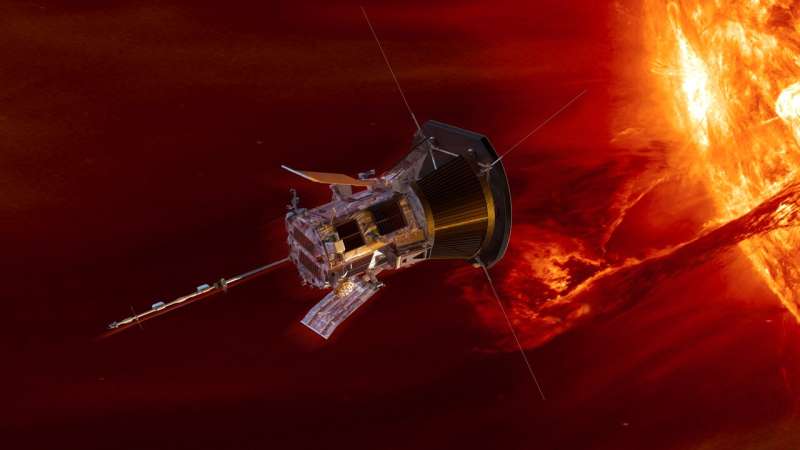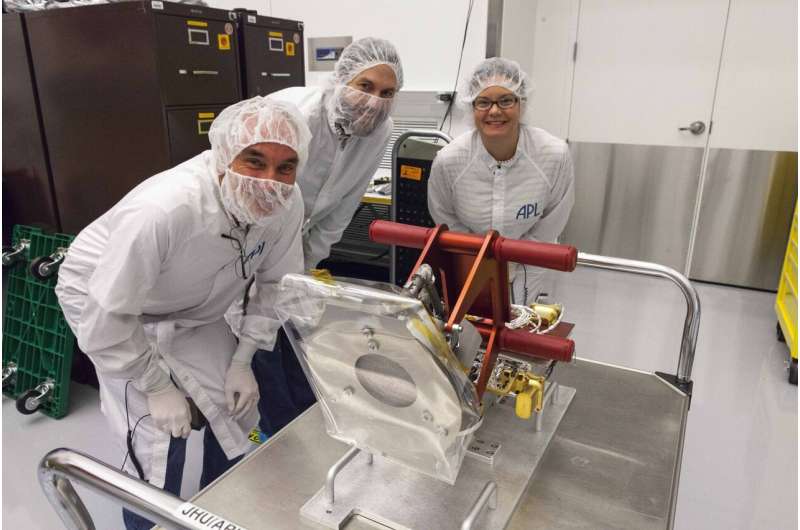NASA scientist discusses Parker's journey to the sun

Sixty years ago, NASA set an out-of-this-world goal: to touch our sun. Sending a spacecraft to the fiery star at the center of our solar system is no small feat. From engineering a spacecraft that could hurtle 430,000 mph through space to agreeing on what kinds of data it would capture, there was a lot to sort out. A half-century in the making, Parker Solar Probe finally launched in 2018. Now, three years later, it has touched the sun.
NASA Program Scientist Kelly Korreck serves as head of science operations and project manager for the Solar Wind Electrons Alphas and Protons, or SWEAP, investigation. SWEAP is one of four instrument suites aboard Parker Solar Probe. SWEAP includes a cup that sits outside the spacecraft's heatshield to scoop up some of the sun's plasma. At least one engineer has deemed it "The Bravest Little Instrument."
Korreck shared some lessons she's learned throughout her career and explained why Parker Solar Probe—like so much at NASA, and in life—is fundamentally about perseverance.
How did you decide to become a scientist? Why solar science, specifically?
I think science has always been part of my life in the form of curiosity. I went to the University of Michigan for undergrad and wound my way through chemistry and medicine. I eventually found my way to physics and astronomy. After graduating, I took a year off to figure out what I was most passionate about. I saw a video with images from NASA's TRACE satellite from the '90s and early 2000s and was totally enamored with all the physics I could see. It's not every day you can go from, "Hey, I'm thinking about this basic physics problem," to "Hey, that basic physics problem has an implication for society," so that's what drew me to solar physics.
I nearly left research after grad school because it was hard to find a job at the time, and I just didn't know if this was my passion. And then I gave one last talk—my mentor said I had to—and got an offer from my boss at the Smithsonian. After that, it was just saying "yes" to every opportunity, like Parker Solar Probe.

What about when there's an opportunity but you're not sure you're ready, or you've never done something like it before?
In general, I take the approach that I can learn just about anything. A lot of times someone will present a challenge and say, "We don't know how to do this." And I say, "Well, we can figure it out. We'll figure out the budget. We'll figure out how many staff we need. We'll figure out what data format is best." That was a lot of how my path came to be. Something needed to be done, and I said, "Let's figure it out."
At this point, I also have 20 years of experience learning to tell when I can handle something and when I should ask for help. I know in the pit of my stomach when it's the right amount of uncomfortable and when it's time to say, "I need an adult—or at least someone to talk this through with."
What's some valuable advice you've received?
One piece of advice that has stuck with me is, "know your why." Know why you're doing this. Because science is hard, right? I'm not going to lie and say it's easy. It takes a lot of hard work, and it takes a lot of long hours. So you have to know your why. And that "why" should be both academic—what scientific thing you want to study—and personal: Why are you serving humanity this way?
What's your "why?" What keeps you motivated when you encounter challenges?
My "why" is taking care of our home here on Earth, but also taking care of space and figuring out how we explore and how we go to new places thoughtfully. How do we make sure we are respecting our humanity and striving for better as we explore?

I also make sure to connect with that joy and wonder that brought me here. I spend a lot of time looking at images from NASA's Solar Dynamics Observatory in the dark to remind myself, "This is why I'm doing it. This thing that is 93 million miles away? Our understanding of it has totally changed over my lifetime."
How do you think about failure?
I'm still trying to get my head around failure. If someone else came to me and said, "Hey, this didn't work out," I would say, "Great, so we know one way that doesn't work. What else can we try?" I don't see it as failure for other people. It's just a way to learn. But I'm still working on that for myself. I heard on a podcast once that if you haven't had three major failures in a month, you haven't been pushing the envelope enough. I think that's so true. If you're getting everything right, it's no longer your best.
And then sometimes you try something challenging, and it's wildly successful. What was it like learning that Parker Solar Probe had touched the sun?
I was at a meeting, and someone mentioned the new Parker data was down. I hadn't looked at it yet, so I loaded it up on my computer. It just felt like, "Wow, we really did it." This is what we were aiming for, for the past 60 years. At the same time, it felt like, "What just happened?" Because it was just a normal Wednesday.
It felt weird to have it happen during the pandemic, too. I'd imagined I'd be in our operations center looking at data with the folks I've worked with for a decade, but of course we were working remotely. It felt kind of uneventful; it wasn't that eureka moment. But I definitely feel a sense of pride and excitement. And the day I found out, I did take another half-hour to play with the data and sit there and look at it for a while, just to be with it. There's still kind of a tingly feeling when I think about what has happened.
What does this mission represent to you?
The story of Parker Solar Probe, and Eugene Parker himself, is about perseverance. His paper on the solar wind was initially rejected. He had to convince the editor to publish it. The whole mission has been about perseverance. Putting a metal cup close to the sun is not easy. It took a lot of work, perseverance, and a really amazing team to get that done. We know our goal is so worth it—that our "why" is there—so we keep going forward.
Provided by NASA's Goddard Space Flight Center



















